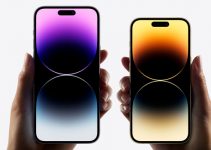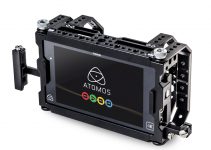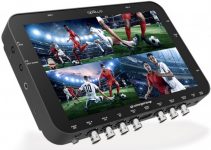We all love to argue about cameras and obsess over comparison footage on YouTube, it’s become almost as popular a pass-time as actually using the cameras themselves.
In my opinion, the comparisons of cameras fall broadly into two categories – the images you can create and how you use them. Seems simple and really it is, but when it comes time to part with thousands of dollars, pounds, euros or whatever your favourite currency of the moment, it all becomes a bit more complicated.
Here is Parker Welbeck to help you choose between two popular cameras, the Canon 1DX Mark II and the Sony A7III.
Parker is a video shooter so his tests are only relevant to video, not stills, and remember – no comparison is ever perfect. Here are the results broken down into way too many categories.
Price
$6000 vs $2000. Does this one need any explanation? The Sony is a lot cheaper than the Canon and honestly, they are very similar cameras in many ways. Canon has been losing market share for some time for many business reasons but largely due to its lack of innovation and improvements when compared to brands like Sony and Panasonic.
It’s hard to see that Canon really have anything to compete with Sony at this price bracket, especially in the 4k video space. Which leads us nicely onto…
4K video
Both cameras shoot 4K video, but the Sony offers full frame and the Canon crops. The Canon does offer 60 frames per second slow-motion in 4K which the Sony doesn’t.
They each have great image quality but the Sony has the sharper image, with the Canon looking a little more obviously sharpened in the camera. The Sony image may be sharper but the Canon has the slow-mo, so take your pick on this one.
Slow-motion
In HD both have 120 frames per second available, which is great but the Sony seems to be a bit sharper, while the Canon loses some quality at these break-neck, high speeds.
Slow-motion can make even the mundane feel epic and I personally love using it whenever it’s appropriate.
Autofocus
Canon was always ahead with dual pixel autofocus, which is still better, but Sony has caught up in recently. The Canon still wins but who would have believed, even a couple of years ago, how close this would be!
Colour Science
Either the black-art or the secret sauce of camera brands, colour science is hard to pin down. Canon is known for its out the box beautiful colour. Sony isn’t.
If, like Parker, you spend some time dialing in the right look on your Sony, you can certainly make is more pleasing, but it takes some work. Can you fix it in post? Sure. That leads us to the next category.
LOG profiles
Sony wins this category as it has LOG and Canon doesn’t. Whether or not you like shooting in LOG is a matter of taste and it does affect how you shoot and expose your image but it is nice to be given the option.
Dynamic range
Dynamic range is one of the most quoted camera specs and rightly so. The Sony wins in this test as it holds more highlight information and detail in the shadows. Knowing how to properly expose your image is vital to creating a well-balanced image but having more dynamic range is always nice.
Compression and file size
Sony does compress its images more than Canon and the files sizes are smaller. This will save you disk space both after the fact and on the cards in the camera but it does mean that you have a more compressed file to work with in post-production.
Low light performance
Sony blew everyone away when the A7s launched a few years ago and suddenly we could see in the dark! The A7III offers a similar advantage over the Canon and if you like to film in the dark then the Sony is going to be your choice.
Body size
Personally, I like the feel of a slightly heavier, more traditional feeling camera body. The weight keeps the micro-shake down and it just feels good to handle. However, the mirrorless options that have come along recently are really attractive. A smaller, lighter body with some classic styling is a beautiful thing and won’t be as tiring to hold all day long.
Reliability
Both of these cameras are well-built and neither should let you down. The Canon is “built like a tank” but I would personally be quite confident out filming with either. The Canon should do a little better in the rain but both are probably better at shooting in the rain than I am at standing in it.
Battery life
Sony used to have terrible battery life and we all knew it! I would regularly find myself with pockets full of batteries for my A7s constantly telling myself “yeah, this is fine”. But it wasn’t. Fortunately, Sony has been working to address this issue and now the battery life between these two cameras is pretty similar. Phew.
Ease of use
The Sony is complex. That’s not a bad thing as it means there are more options for customization and tweaking every possible setting but for Parker, Canon wins because it is simpler and easier to use. Fair enough Parker.
Screen articulation
The Sony screen tilts and the Canon doesn’t do anything at all. So the Sony wins here but really neither is as good as it could be. There are some great screens on other cameras that twist all kinds of ways, so if that’s something you really need then you might have to look elsewhere.
Screen
Speaking of screens… both of these are tricky to see in strong sunlight and, according to these tests, the Sony has colours that are not truly representative. The edge here goes to the Canon.
Dual recording
Nobody needs dual recording until suddenly you wish you had it. Cards do fail, it does happen. Just because it hasn’t happened to you doesn’t mean it won’t. Is it a major worry for most shooters? No, but does having dual recording, as the Sony does, remove the worry all together? Yeah pretty much. So why not?
IBIS
In body image stabilisation is great and coupled with stabilised lenses you can pull off some beautifully smooth camera movement. The Sony has it and the Canon doesn’t so the win is obvious. If you use external stabilisation equipment then maybe it doesn’t matter but it’s nice to have the option.
Exposure and focus tools
I can’t believe the Canon offers so few visual meters and tools but, there you go! I personally use peaking all the time, particularly as I shoot in manual focus. There are other ways to judge exposure, but on such a small screen peaking is invaluable. A win for Sony!
Lenses
Canon has years and years of high-quality, beloved lenses. Sony is catching up but the win goes to the massive choice of EF glass.
Sony wins Parker’s tests according to the numbers, but clearly, he won’t be fully switching anytime soon. Which should you buy? Good question.
[source: Parker Walbeck]
Order Links:
Sony Alpha a7 III Mirrorless Digital Camera (B&H, Amazon)
Canon EOS-1D X Mark II DSLR Camera (B&H, Amazon)
Disclaimer: As an Amazon Associate partner and participant in B&H and other affiliate programmes, we earn a small comission from each purchase made through the affiliate links listed above at no additional cost to you.




